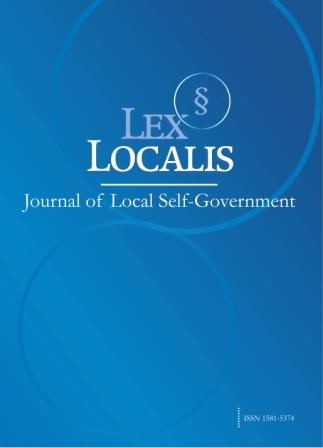Research on the influence mechanism of digital music teaching platform on the development of students' rhythmic perception and musical creativity in preschool education
DOI:
https://doi.org/10.52152/800139Keywords:
digital music teaching platform; preschool education; rhythm perception; musical creativityAbstract
In order to improve preschool children's understanding of music, creativity of music and perception of music rhythm, this paper researches the application of digital music platform based on the teaching process of digital music teaching platform from the three dimensions of rhythm training, music creativity and interactive music games. The influence mechanism model is constructed through interactive learning and personalized feedback mechanism, and the optimization strategy of music teaching is realized based on online and offline mixed teaching strategy and the development of personalized teaching plan. The traditional teaching method was divided into the control group, and the digital music teaching platform was divided into the experimental group. In the improvisation ability and independent arrangement and expression ability, the scores of each index in the experimental group increased to more than 4 points. In the control group, students' scores increased to more than 2 points in each index. In rhythmic perception, the rhythmic imitation accuracy of students in the experimental group increased by 36.08%, rhythmic stability increased by 50%, and beat memory was widened by 5 beats, which was more outstanding compared with the control group. The music teaching accomplished through the digital music teaching platform can effectively improve preschool children's rhythmic perception and musical creativity.
References
Kalimullina, O., Tarman, B., & Stepanova, I. (2021). Education in the context of digitalization and culture. Journal of Ethnic and Cultural Studies, 8(1), 226-238.
Frolova, E. V., Rogach, O. V., & Ryabova, T. M. (2020). Digitalization of education in modern scientific discourse: new trends and risks analysis. European journal of contemporary education, 9(2), 313-336.
Shih, Y. H. (2020). Teaching Principles for Aesthetic Education: Cultivating Taiwanese Children's Aesthetic Literacy. International Journal of Education and Practice, 8(3), 568-576.
Tus, J., Lubo, R., Rayo, F., & Cruz, M. A. (2020). THE LEARNERS'STUDY HABITS AND ITS RELATION ON THEIR ACADEMIC PERFORMANCE. International Journal Of All Research Writings, 2(6), 1-19.
May, B. N., Broomhead, P., & Tsugawa, S. (2020). A music literacy-based rationale for popular music ensembles and experiences in music education. International Journal of Music Education, 38(3), 470-491.
Navbakhor, K. (2020). The role of music lessons in the formation of national and intercultural competence in students. Mental Enlightenment Scientific-Methodological Journal, 130-139.
Fang, P. E. N. G. (2021). Optimization of music teaching in colleges and universities based on multimedia technology. Advances in Educational Technology and Psychology, 5(5), 47-57.
Li, Y., & Sun, R. (2023). Innovations of music and aesthetic education courses using intelligent technologies. Education and Information Technologies, 28(10), 13665-13688.
Sun, W., Wang, H., Wang, L., Ye, L., & Chen, P. (2022). The cultural art aesthetic behavior of entrepreneurship education for college students in the characteristics of film and television media. Frontiers in Psychology, 13, 880649.
Iheakanwa, J. U., Obro, S., & Akpochafo, W. P. (2021). Reading ability, study habits and students’ academic performance in social studies. Reading.
Hermida, R. (2021). Students' strategies in cultivating their reading habit. Accentia: Journal of English Language and Education, 1(1), 17-23.
Tang, J., & Sornyai, P. (2023). The cultural treasures of Baima Tibetan folk songs in Gansu Province, China, as a resource for literacy education in Chinese music History. International Journal of Education and Literacy Studies, 11(3), 234-243.
Tabuena, A. C. (2021). Carabo-Cone, Dalcroze, Kodály, and Orff Schulwerk methods: An explanatory synthesis of teaching strategies in music education. International Journal of Asian Education, 2(1), 9-16.
Rehan, F., Zaidi, S. S., Imran, M., Akhtar, S., Shah, A., & Hameed, S. (2024). Exploring the Efficacy of Music-Based Pedagogies in Developing Communication Skills: Perspectives of Early Childhood Educators. Al-Qanṭara.
Calderón-Garrido, D., Gustems-Carnicer, J., & Carrera, X. (2020). Digital technologies in music subjects on primary teacher training degrees in Spain: Teachers’ habits and profiles. International Journal of Music Education, 38(4), 613-624.
Spieker, B., & Koren, M. (2021). Perspectives for music education in schools after COVID-19: The potential of digital media. Min-Ad: Israel Studies in Musicology, 18, 74-85.
Espigares-Pinazo, M. J., Bautista-Vallejo, J. M., & García-Carmona, M. (2022). Evaluations in the moodle-mediated music teaching-learning environment. Technology, Knowledge and Learning, 27(1), 17-31.
Olvera-Fernández, J., Montes-Rodríguez, R., & Ocaña-Fernández, A. (2023). Innovative and disruptive pedagogies in music education: A systematic review of the literature. International Journal of Music Education, 41(1), 3-19.
Carrión Candel, E., & Colmenero, M. J. R. (2022). Gamification and mobile learning: innovative experiences to motivate and optimise music content within university contexts. Music Education Research, 24(3), 377-392.
Downloads
Published
Issue
Section
License
Copyright (c) 2025 Lex localis - Journal of Local Self-Government

This work is licensed under a Creative Commons Attribution-NonCommercial-NoDerivatives 4.0 International License.








